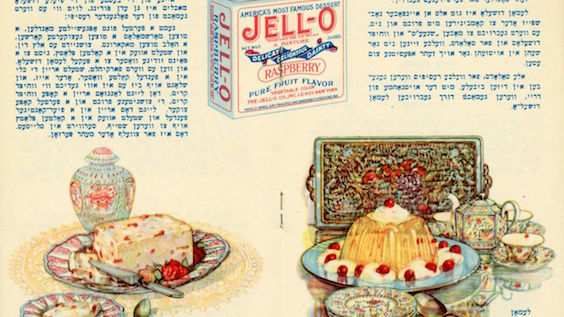
Long a staple of the American Jewish desert table, Jell-O has a much more divisive and political origin story than you’d expect from a wobbly gelatinous mass.
As told in Roger Horowitz’s new Kosher USA: How Coke Became Kosher and Other Tales of Modern Food, in the 1910s, Genesee Pure Food Company began to advertise its newfangled food-like product, in Yiddish, to poor Jewish immigrants. A decade later, the company turned to the Jewish advertising firm Joseph Jacobs (the folks behind the Maxwell House haggadah)—in order to reach “the better classes of the otherwise unreachable Jewish-speaking people.”
But the advertisements lacked rabbinic approval, and observant Jews demanded to know: Was Jell-O kosher or wasn’t it? After all, gelatin, Jell-O’s base, was mostly made from collagen-bearing tissue in pig skin, rendering it treyf…right?
Major rabbis started picking sides. Rabbi Hayyim Grodzinski of Vilna declared that, due to bitul, the notion that unkosher food is fine to eat in tiny proportions to the whole, Jell-O was A-OK. Still others cited an obscure Mishnaic source to say actually, even certain pig hides can be kosher.
Fast-forward to 2016. Today, Jell-O has a K certification (which you can read about here), so depending on where you fall on the exceptionally complex spectrum of kashrut, this blobby dessert food may be just for you. And if not, there’s always kosher jell dessert.
Image: Joseph Jacobs Advertising
JTA has documented Jewish history in real-time for over a century. Keep our journalism strong by joining us in supporting independent, award-winning reporting.





